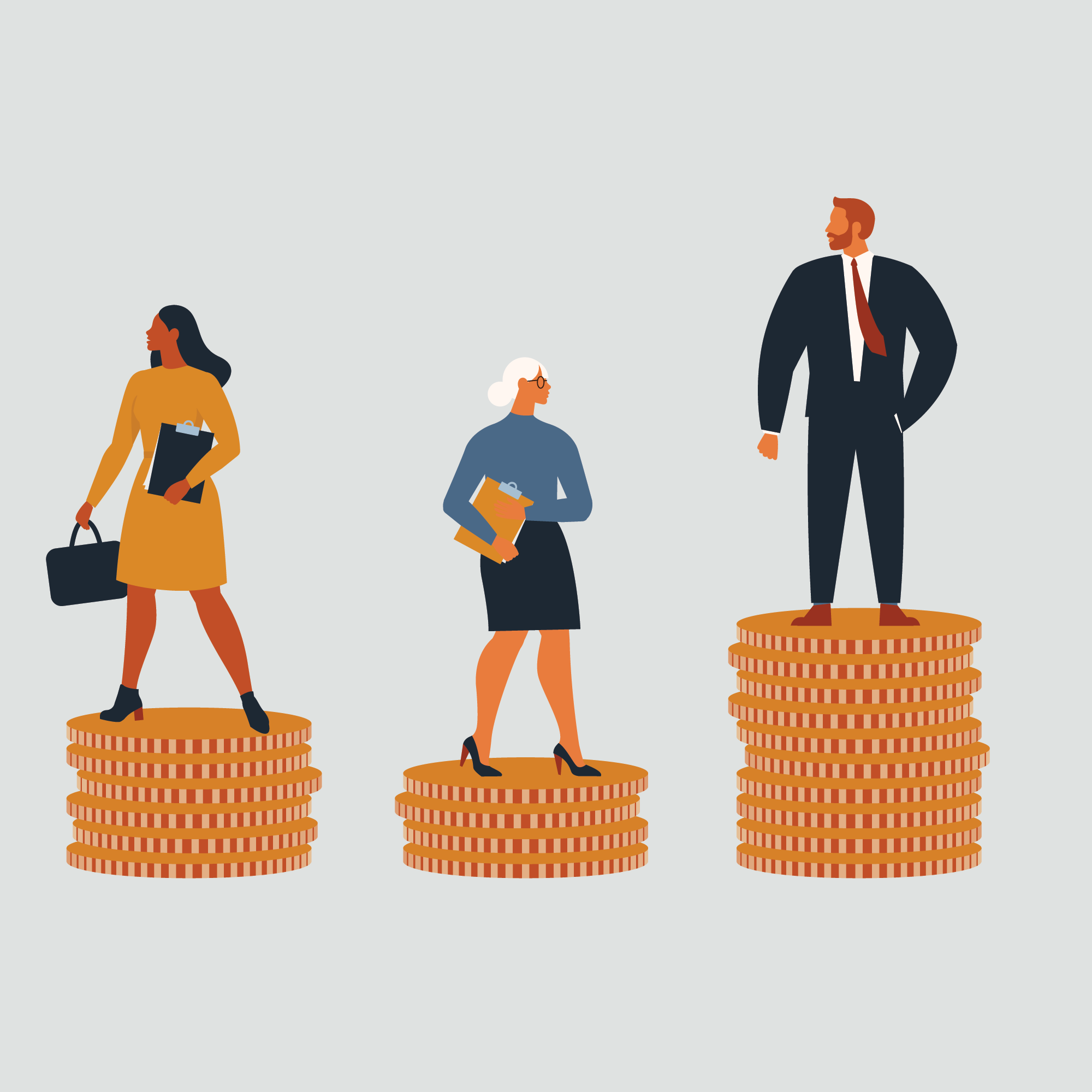Equal Pay Day is dedicated to raising awareness about the gender pay gap. This day also symbolizes how long and how hard women must work to earn the same amount as men.
Equal Pay Day shifts every year, marking the date at which women who worked full-time through all of 2021 and this far into 2022, finally catch up to what men earned in 2021. This year, Equal Pay Day in Ontario is on April 12.
There are different ways of measuring the gender pay gap, but no matter how you slice it, the gap still exists and hurts all women.
On average, Ontario women face a gender pay gap of about 30%. Over a 45-year career, that is the equivalent to working 13 years without pay. As shocking as that is, the gender pay gap is far worse for racialized, Indigenous, LGBTQ2+, immigrant women and/or women with disabilities.[1]
Yet too often women’s economic inequality is chalked up to individual choices. But nothing could be further from the truth. Rather, pay inequity is directly connected to other economic-related gender gaps such as societal expectations around fields of study and work, career advancement opportunities, lack of access to affordable childcare for women who want to work full-time, and more time allotted to domestic work (which could be one reason why there’s an overrepresentation of women in minimum wage jobs).
The pandemic also exacerbated gender gap and wage disparities:
- Many businesses in the hospitality sector, including restaurants and hotels with often low paying roles, were forced to comply with pandemic-related measures and had to shut down. This meant women, who make up a large portion of low paying workers in this sector, were left without a job.[2]
- According to a Simon Fraser University study, women consistently lost a disproportionate number of jobs in every job category outside of heath care and social assistance. Worst hit was the retail trade, where women make up 50% of employees, yet lost 91% of the jobs.[3]
- Since the pandemic, 1 in 4 women have been thinking about putting a hold on their career progression or leaving the workforce entirely. Many cited a reason for this being burnout and gender norms around unpaid care.[4]
Closing the Gender Pay Gap
If things continue as they are, it will take decades (the World Economic Forum predicts up to 270 years) to close the economic gap between women and men. Fortunately, there are a few tools HR professionals can use to help progress equal pay and gender parity in the workplace:
- Pay Equity Certificate Program: On August 31, 2021, the Canadian Government passed the Pay Equity Act, giving employers with 10 or more employees three years to develop and implement proactive pay equity plans designed to ensure equal pay for work of equal value.
To support this effort, HRPA developed a 3-module certificate program that provides HR leaders with the essential background to the Ontario Pay Equity Act and the obligations imposed on employers in the province to comply. Companies also learn the necessary steps to both achieve and maintain pay equity to gauge your organization’s state of compliance with the legislation. Learn more. - Issues Affecting the HR Profession Hub: Head to the Issues Affecting the HR Profession Hub and under the Pay Equity section we offer a few tools to help you address current gender gaps. We also include resources for advancing gender wage equality in your organization. Learn more.
- The Women in Governance Parity Certification program. One of the biggest contributors to pay inequity is unequal access to career opportunities. This barrier keeps women in lower level, lower paying jobs compared to their male counterparts.
To address this, Women in Governance (in partnership with McKinsey Co.), developed the Parity Certification – a diagnostic tool that helps identify an organization’s position on the gender parity and intersectionality spectrum. (Accenture, Mercer, and WTW support the Women in Governance team in the assessment of applications.) It’s a resource that many organizations take advantage of as it allows them to tangibly measure and move towards their gender parity goals and targets. Across North America, nearly 700,00 employees in some of the largest organizations have been positively impacted by the workplace policies and procedures that were inspired by Parity Certification’s assessments.
“The Women in Governance Parity Certification has helped organizations recognize that parity targets lead to more inclusive outcomes and practices,” says Nicole Piggott, Chief Operating Officer, Women in Governance. “We see companies that have set targets and measures are more successful in creating action plans towards equity. Without these concrete mechanisms in place equity is fragile and difficult to sustain.”
The Parity Certification is an annual assessment and companies that undergo certification are evaluated in three distinct areas: Governance and Vision, Collective Enablers and Equity. Each of these areas are given a score and the total score is the basis of the certification result.
“Completing the certification year over year holds organizations accountable and allows them to monitor trends and gaps in programming,” says Nicole. “By examining equity yearly, it is easier to take corrective action immediately and diminish your risk of losing top-performing women and maintaining an engaged staff who feels supported and treated fairly.”
Learn more here.
Women in Governance is also hosting its 2022 Parity Forum on Wednesday, April 27, from noon to 1:00 p.m. EDT. Register here.
